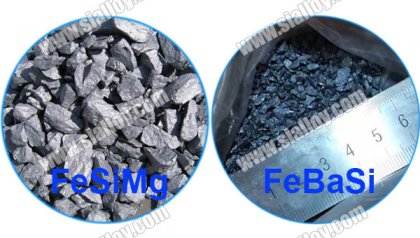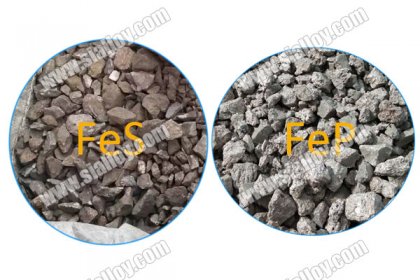foundry silicon carbide can reduce rroduction costs
Silicon carbide is a compound composed of one carbon atom and one silicon atom, of which silicon accounts for 70% and carbon occupies 30% of the area (by weight). Because it dissolves in the presence of slag, carbon atoms and silicon atoms will be released into charged ions (C-4 and Si +4), so it is also an effective deoxidizer widely used in electric furnace steelmaking . When it is added to gray iron, ductile iron or malleable iron, it not only dissolves easily, but also allows carbon and silicon to enter the melt in the form of alloys.
When the temperature is lower than 1620℃, its carbon will act as a deoxidizer, so that less stable oxides such as FeO and MnO will be reduced by the reaction of SiC+FeO=Si+Fe+CO. When the temperature is higher than 1620 ℃ (for example, steelmaking), silicon will take on all the deoxidation tasks, and carbon will act as a carburizing agent, and its yield can reach 100%. Coreless induction melting of iron is the main application area of silicon carbide. In the United States, about 95% of coreless induction furnaces use SiC as the main silicon source. In terms of gray iron, ductile iron and malleable iron, SiC+FeO=Si+Fe+CO is used to reduce the content of FeO and MnO in the slag through SiC.
Since the presence of FeO can lower the melting point of any slag, at any given temperature, because the melting point of the slag drops, more slag will become liquid. For example, when the FeO content in the slag is 10%, its melting point will be 1350-1400°C, and under the vigorous stirring action of the coreless induction furnace, this liquid slag will be “homogenized” in the melt. As a result, thousands of very small slag particles are left in the melt. Many of the surface defects of the casting are such high fluidity of high FeO and MnO slag (commonly referred to as manganese silicate slag) brought into the mold Caused. If SiC is added to reduce the FeO content of this slag to 1 or 2%, its melting point will be increased to 1500-1550℃, then, at the usual tapping temperature (1500-1550℃), this slag or It remains solid, or only a small amount becomes liquid, so that a larger monomer is retained in the furnace, which makes the slag particles easily removed due to the higher floating speed, and makes them carried The chance of casting defects and casting defects is greatly reduced.
The presence of very small FeO-SiO2 inclusions (fayalite) in the molten iron is the main reason for the reduced fluidity of the molten iron, the increased tendency to shrink and the increase in white mouth, which is especially true for ductile iron. Therefore, reducing its amount in molten iron can eliminate the tendency to increase shrinkage and white mouth.
Since silicon carbide dissolves rather than melts in molten iron, it takes longer to enter the molten iron than FeSi. Due to the longer action time, the decay time increases. Therefore, in terms of ductile iron, although the furnace often does not leave room for silicon or only a small room, many foundries have found that it is economically cost-effective to add 3-4 kg/T of SiC to the charge of. The metallurgical effects they have seen are: reduced white mouth occurrence, reduced defects caused by slag, increased number of graphite balls, reduced tendency to shrinkage and increased decay time. This is partly due to the replacement of ferrosilicon containing aluminum and carburizers with higher N and S content by SiC with low residue content.
Another use of SiC in ductile iron is the "pre-pregnancy" effect of pure magnesium treatment. One of the disadvantages of pure magnesium treatment is the increased tendency to produce shrinkage and carbides. Studies abroad have shown that adding 2kg/TSiC to the treatment package is the most effective way to eliminate this metallurgical problem.
Because the content of FeO in ductile iron slag is higher than that in gray iron or vermiculite slag, the problem caused by fluid slag on ductile iron is more serious than that on gray iron or vermiculite. Therefore, The effect of adding SiC to ductile iron will be better.
In terms of gray iron and vermicular iron, the metallurgical effects observed in foreign foundries are basically the same as those observed in ductile iron: the amount and fluidity of slag are reduced, the number of eutectic clusters is increased, and the tendency to white mouth is reduced. Decay time increases. In addition, foreign gray iron and vermicular iron foundries often have enough room for a certain amount of SiC in the charge. The most common dosage is: gray iron 10-15kg/T, vermicular iron 5-10kg/T.
Many foundries in China, especially ductile iron plants, have defects caused by slag to varying degrees, and are also facing a problem of how to meet increasingly high quality standards and increasingly fierce cost competition. In addition, silicon carbide, which combines deoxidizer and carburizer, and is rich in resources, will surely become a very important tool for many foundries in China to reduce slag defects, improve casting quality, and reduce costs.
In short, the application of silicon carbide in my country's current foundries is both imperative and the most popular.
 中文
中文


